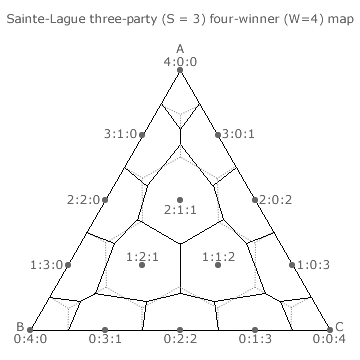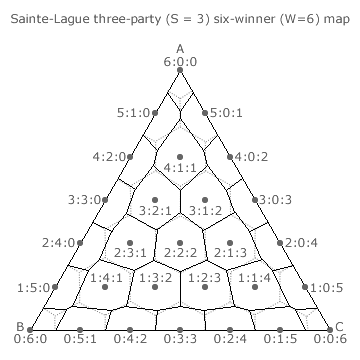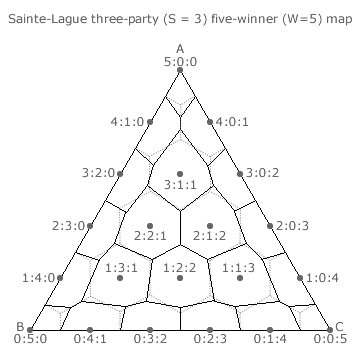Comparisons: Sainte-Laguë ~ Maps 3
Three-Party Sainte-Laguë Party-List Maps (continued)

Like both the CHPV and D'Hondt methods, the Sainte-Laguë one is a highest averages approach to the party-list system. Its inner domains are therefore irregular hexagons with boundaries that, if extended, would intersect with one of the three apexes; see the earlier D'Hondt Method ~ Maps section for an explanation of this aspect.
For three parties, the Sainte-Laguë method does not always produce an optimally proportional outcome; although it generally does so. It is very noticeable that the area of any Sainte-Laguë domain is roughly the same as its corresponding OPV domain. Every Sainte-Laguë boundary also corresponds quite closely with its equivalent OPV boundary too. Hence, there are few areas within the map where tally share points fall into dissimilar domains. Consequently, most outcomes are optimally proportional.
The chances of a non-optimal result are essentially independent of the level of support each of the three parties receives since it does not matter whether the tally share point is near the centre of the map or its periphery.
As more seats are made available, the number of dissimilar domain areas increases but the area of each one decreases. The result of these two conflicting trends is that a very high degree of optimally is maintained regardless of the number of winners; see next section.


Proceed to next section > Comparisons: Sainte-Laguë ~ Optimality
Return to previous page > Comparisons: Sainte-Laguë ~ Maps 2
